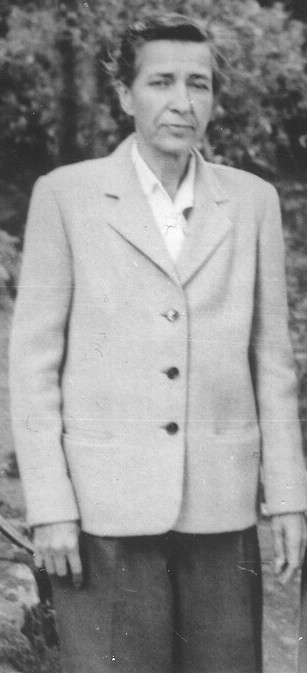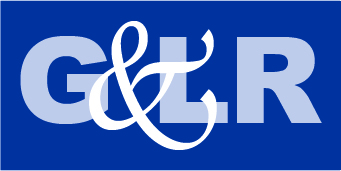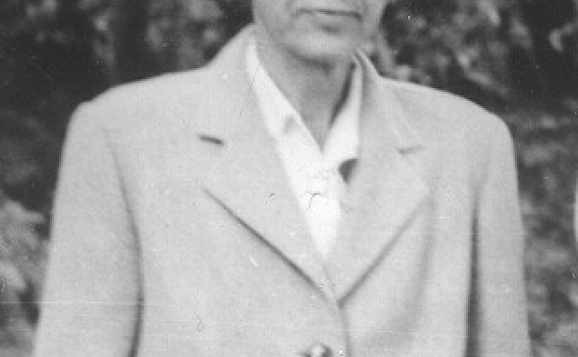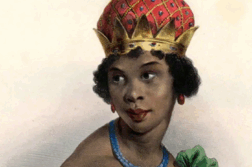THE SUPREME COURT’S recent decision in Bostock v. Clayton County outlawed employment discrimination based on sexual orientation for all Americans. Yet amid the justifiable jubilation surrounding that decision, an important scientific history lesson for our community has gone overlooked. In an amicus brief filed with the Court in the case, a group of gay and lesbian historians cited a scientific work that’s been mostly forgotten in the eight decades since it was published. Even more thoroughly forgotten, and unmentioned in the historians’ brief, were the contributions to that study by a lesbian named Jan Gay whose work and passion made the whole project possible.
The amicus brief (signed by nine scholars, including Alice Kessler-Harris and George Chauncey) implicitly recognized the importance of the project that Gay instigated, as she was the inspiration for a term that George W. Henry used in his title: “In 1941, Henry published Sex Variants: A Study of Homosexual Patterns, a book whose purpose he telescoped as simply a study of sex.” The timing of Henry’s use of the phrase “sex variants” was important, as it established that the concept of sexual variation existed long before the adoption of Title VII. This allowed the scholars to argue in their amicus brief that homosexuality was included under Title VII’s protected category of “sex” (as gender)—important because it appealed to the “textualist” approach of some Supreme Court justices. In fact, in the decade following the publication of Henry’s book, the term “sex variants” had begun to circulate beyond the medical profession, sometimes appearing in popular media to designate homosexuals. Some early gay activists adopted this phrase, as did the Mattachine Society in 1954 in its call for further study of American law’s impact on “the sex variant.”
While the term “sex variant” was Henry’s construction, the idea for the book was not. That honor belongs to Jan Gay. Born as Helen Reitman, Gay was something of a globetrotter, and on one of her many visits abroad she met gay rights pioneer Magnus Hirschfeld. At Hirschfeld’s Institute for Sexual Science, Gay learned about interviewing techniques. Committed to improving the public perception of people like herself, Gay conducted 300 interviews with lesbians and some gay men, and she hoped to present her case studies in a book. Like Hirschfeld, Gay believed that people would grow more understanding and accepting once they had a chance to read gay people’s life stories in their own words.

Gay was already a successful author by this time, having written a number of children’s books years before, illustrated by her lover Eleanor Byrnes. More recently, she had written On Going Naked, the first book on nudism to receive a widespread readership in the U.S., despite being banned in many places. She also wrote the script for the documentary based on the book. Though that film passed the National Board of Review (since it was considered an educational documentary), local censors and police banned or shut down showings in many cities.
Despite her earlier success as an author, Gay had no luck finding a publisher for her case studies of homosexuals. An editor advised her to seek the sponsorship of a scientific group in order to make the book respectable and to avoid the snares of the censors. She did just that, approaching Robert Latou Dickinson, an eminent gynecologist and birth control advocate whose recent book The Single Woman: A Medical Study in Sex Education (1934) had briefly but positively addressed lesbianism. Dickinson had brought psychiatrist George Henry into the circle, and the Committee for the Study of Sex Variants was born. The Committee’s project was funded by medical researcher and Procter & Gamble heir Clarence Gamble and his brother Sidney. No other foundations or donors stepped forward to fund the project. Even the Gamble brothers didn’t want to be publicly acknowledged in connection with a project on homosexuality, though, so their financing remained anonymous. When the work got underway, George Henry took the lead, while Gay provided her case studies as examples and rounded up new, this time American, subjects. She enlisted the help of Thomas Painter, a gay man who participated in and studied the New York hustling scene. (Painter’s studies had likewise never found a publisher, and he was not acknowledged in Henry’s book.) Gay and Painter found all the participants for the study, and Gay conducted the initial interviews with all of them. In the work that resulted in 1941, Henry made an astonishingly bold claim for the time: “The sex variant is not an uncommon person, and he is found in all classes of society. Moreover, there is little scientific basis for precise classification of humans as male and female.” This straightforward statement written by Henry and sponsored by the Committee for the Study of Sex Variants (and endorsed by the Committee’s new board of distinguished scientists) was nothing short of revolutionary. In a few declarative sentences, Henry dismissed centuries of assertions based on religious prejudices against LGBT people, words that flew in direct defiance of the Judeo-Christian proposition that “man and woman He created them.” The Committee was not naïve in its promotion of a scientific, as opposed to a moralistic, view of sexual variation, and its members understood that it wouldn’t be an easy sell to the general public. Having studied with Magnus Hirschfeld and having read Havelock Ellis, Gay introduced Henry to their work. With a debt to Gay, Henry wrote: “I am aware that it is less than forty years since Havelock Ellis’ Studies in the Psychology of Sex first appeared in English and that the publisher of the book was soon arrested for publishing it.” At long last, the Committee found a publisher for the book that Henry, with Gay’s assistance, finally produced. Harper Brothers agreed to publish it, but only through its medical textbook division, Hoeber, and with the understanding that the book would be pitched primarily to doctors. Such was the Committee’s intention anyway, so they gladly accepted the contract. In the new book’s introduction, Henry acknowledged Gay’s indispensable role: “The general plan of approach embodied in this project was first laid before the members of the Committee by Miss Jan Gay, who offered to bring a group of sex variants, as voluntary subjects for study, into contact with the research group. The full time services of Miss Gay were engaged and much of the success of this study has been due to the tact and resourcefulness which she has shown in bringing subjects and doctors together.” In short, without Gay there would have been no subjects, and without subjects there would have been no book. And yet, the divergent approaches to these research subjects led to a parting of the ways between Gay and the Committee after the publication of Sex Variants. Gay’s hope that the book would present homosexuals’ stories in their own words was only partially realized. While Sex Variants does include first-person accounts from each of its eighty subjects (forty men and forty women), these narratives were thoroughly embedded within Henry’s medical discourse. Each of the case studies, in fact, was presented in the same way. First, Henry presented his general impressions of the interview subject. Only then was a subject’s (edited) narrative presented, after which Henry offered the results of the subject’s medical examinations and his own conclusions. Henry categorized each of the subjects as either homosexual, bisexual, or “narcissistic.” In the latter category, Henry included subjects who exhibited what he considered to be antisocial behavior, such as hustlers, prostitutes, and cross-dressers. Henry showed special disapproval for homosexuals who were satisfied with their sexual orientation and didn’t want to change. Clearly, Henry’s agenda differed from Gay’s. In the book, Henry wrote: “Through this study they [homosexuals]hope for a better understanding of their maladjustments and as a consequence a more tolerant attitude of society towards them.” Like Freud, Henry believed homosexuality was a maladjustment, the result of arrested development. He also believed that gay people were a threat to the social order. He did not believe that homosexuals could be “cured,” but he did advise gay people to suppress their natural orientations, which were “dangerous” under current conditions. In this respect, in their Bostock dissent, Justices Alito and Thomas were correct when they stated that “the plain truth is that in 1964 homosexuality was thought to be a mental disorder, and homosexual conduct was regarded as morally culpable and worthy of punishment.” Indeed, many people in the 1950s and ‘60s, including those in the scientific community, believed just that. Edmund White’s narrator captured this sentiment when expressing the attitude of the “famous analyst” Dr. O’Reilly in A Boy’s Own Story: “Perhaps [the boy’s]homosexuality was a symptom of some other deeper but less irrevocable disorder. That’s what Dr. O’Reilly thought.” Justices Alito and Thomas (and Kavanaugh, in a second dissent), as textualists, were keenly concerned with how psychiatrists, counselors, legislators, dictionaries, and the general public viewed homosexuality around the time that Title VII was enacted (1964). However, not everybody in 1964 held that homosexuality was, as Alito and Thomas wrote, “morally culpable,” or what White’s Dr. Reilly regarded as a conflict in need of resolution. Other opinions were in the air and gaining steam. Following Sex Variants, studies on sexual practices, and especially sexual “deviants,” began to appear regularly, especially as departments of sociology at universities proliferated in the postwar era. Americans became fascinated with “social problems” such as delinquency and deviance. The most famous work on sex during this period (published seven years after Sex Variants) was that of Alfred Kinsey, of course, with its startling claims about the number of Americans, especially American men, who had participated in same-sex sexual activity in some form. Just a few years after Kinsey’s Sexual Behavior in the Human Male appeared in 1948, Donald Webster Cory published The Homosexual in America: A Subjective Approach, a book that influenced and galvanized gays in that decade, including some members of the Mattachine Society. Cory, the pseudonym for Edward Sagarin, would later gain standing an academic sociologist and distanced himself from his early defense of gay life. In doing so, he disappointed and angered many gay rights activists. Among them, Frank Kameny wrote a scathing letter to Sagarin, telling him: “you have become no longer the vigorous Father of the Homophile Movement, to be revered, respected and listened to, but the Senile Grandfather of the Homophile Movement” (cited in John D’Emilio’s Sexual Politics, Sexual Communities). Sex Variants had still another, perhaps unexpected, stream of influence. Its social scientific approach of using case studies to better understand the lives of gay people became popular enough that some opportunistic publishers concocted plans to circumvent the censorship policies of the day. In the 1950s and into the ’60s, postal restrictions specifically targeted gay male material. (The courts eventually ruled against the Post Office in 1967, allowing photographs of full-frontal male nudity to be distributed.) Henry’s Sex Variants had made it past the clutches of the censors in the 1940s because it was a scientific book. A small segment of the flourishing gay pulp publishing industry, years later, produced books that took on the trappings of scientific case studies but which in fact were fiction and pure pulp. One enterprising young man, L. T. Woodward, who presented himself as a medical doctor from the age of 22, published case studies on the social science model of Sex Variants (including Twilight Women and Sex and the Armed Services), though in fact his stories were as fictitious as his medical credentials. (The Lesbian Pulp Fiction Archive at Mount Saint Vincent University categorizes these works as fictional “erotica compiled as psychiatric case studies.”) It was hoped by publishers such as Medco Books that fiction masquerading as science would slip through the net of postal inspectors and censors. In the end, Sex Variants became the first textbook to represent a collaboration between straight researchers and gay people (Gay and Painter) who were not just subjects but also collaborators. Still, scientific and publishing conditions of the time ensured that the scientists were free to impose their medical and pathological analysis of homosexuality in place of the first-person accounts Gay wished to foreground. But despite those disappointments, the work that Jan Gay envisioned and championed resulted in a groundbreaking book that an amicus brief eighty years later would cite in a landmark LGBT decision by the Supreme Court. For that, Gay’s contribution deserves to be remembered and honored.
Brian Fehler, professor of English at Texas Women’s University, where he teaches feminist rhetorics and history of rhetoric, lives in Fort Worth.





